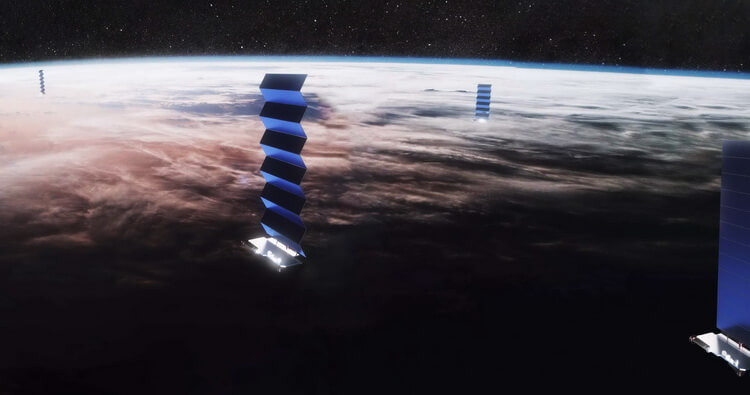Billionaire Elon Musk’s telecommunications company Starlink is preparing to put into practice a long-standing plan: to provide internet access directly to mobile phones, without relying on additional antennas or routers. A new page dedicated to the topic has appeared on the company’s official website, which increases the expectation that the service will start operating in the coming months.
The product is called Starlink Direct to Cell for now. It would work with smartphones compatible with LTE wireless communication technology.
Start of operations
Starlink announced an alliance with U.S.-based carrier T-Mobile in August 2022. More than a year has passed without the companies making a peep about the news. The impression is that it will now: the idea of SpaceX’s telecommunications division is to provide text message communication as early as 2024.
To do so, it would be enough to have a compatible smartphone and point it at the sky, in order to capture the signal of the satellite closest to that region. At least that’s the promise of all companies that bet on satellite connectivity on smartphones.
A few months ago, I had the opportunity to talk to Cristiano Amon, the CEO of Qualcomm, about the topic. He told me that satellite connection has real benefits for users, as we have all become “dependent on telephone networks” for our everyday lives.
In addition to phones, Amon believes that technology can also be decisive in cars. “It’s important to know where the driver is in case the airbag deploys,” he said.
A long way
Despite the opportunities surrounding this type of connection, you have to keep in mind that there are limitations. The most obvious has to do with the so-called line of sight. It is not possible to connect to a satellite if the smartphone is inside a covered environment.
In addition, current experiences show that the network is still slow. I even experienced Apple’s satellite SOS service with the iPhone 14 in San Francisco, in the United States. Exchanging messages can take many seconds, and we are used to almost instantaneous communications.
The new page on Starlink’s website anticipates that the Direct to Cell service will evolve into web browsing and voice calls in the future. In addition to connecting smartphones, Musk’s company has plans to connect Internet of Things (IoT) devices by 2025.
Satellites with eNodeB modem
Starlink has published a figure that demonstrates the structure of Starlink Direct to Cell. The “unmodified” cell phone talks to the company’s satellite network, which communicates with the network on the ground. From there, data traffic follows the usual route of the internet, accessing a partner operator’s network and voice, text, and data servers.
To achieve this result, the company includes an eNodeB modem in the satellites. Not all are adapted with the new hardware, however. This is nothing new because this type of equipment is already used by telephone operators to provide the 4G signal.

